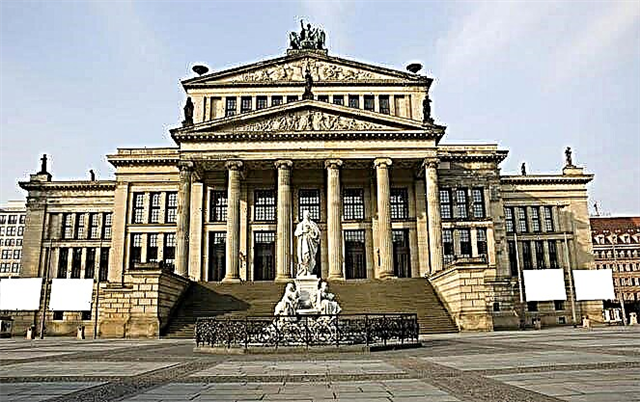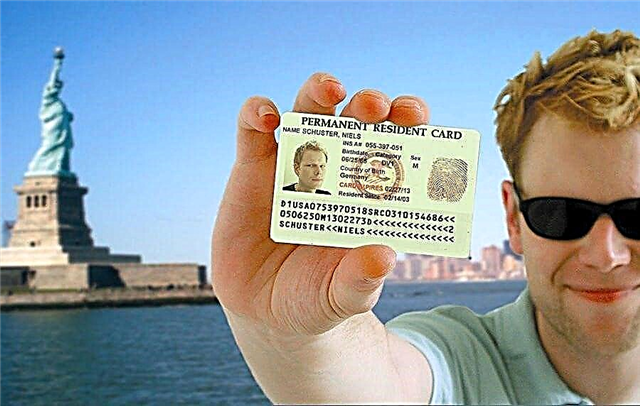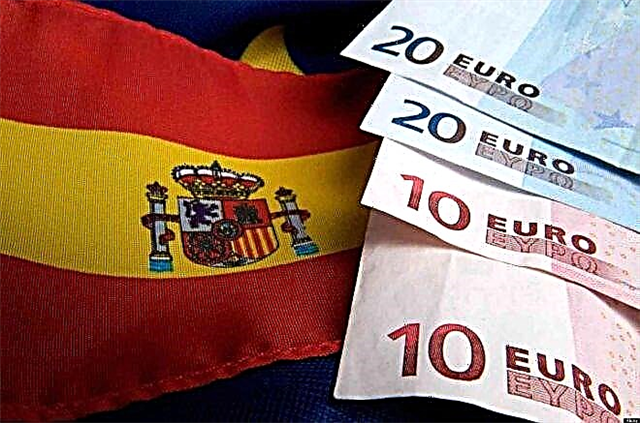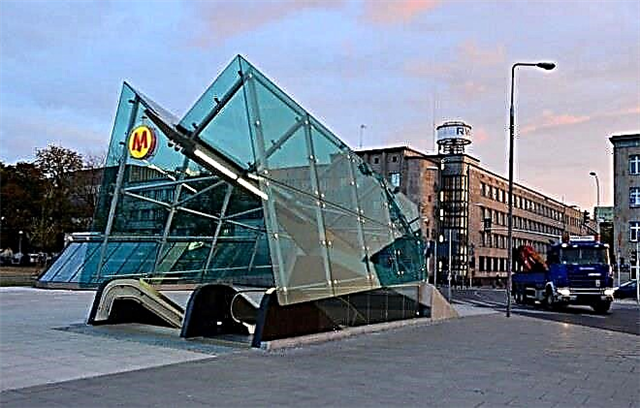The Warsaw metro (in Polish Metro Warszawskie) is one of the newest in Europe and the only one in Poland. It is a beautiful modern building with all the necessary safety attributes and innovative technologies that make it easy to use. Today it is one of the most convenient modes of transport in the Polish capital - every day the Warsaw metro is used by up to 400 thousand people who value personal time and comfort. Every year the metropolitan subway transports over 140 million Poles and foreigners.

History of the Warsaw subway
Many tourists do not even wonder if there is a metro in Warsaw. And in vain - this type of transport allows you to quickly and relatively inexpensively move around the big city.
It should be noted that the subway in the Polish capital was planned to be built after the end of the First World War. The very first project was presented in 1918, when the Polish state reappeared on European maps, but it was never implemented due to economic problems.
Once again, the Polish government returned to this issue in the 30s of the last century, when it was planned to build two metro lines. The work began in 1938, but the Second World War did not allow them to be completed. Today, the tunnels of the then unfinished metro have been turned into wine cellars.
In the 1950s, there was an urgent need for a deep underground crossing the Vistula and capable, according to Stalin's plans, of serving for the hidden transfer of troops. But the death of the leader of the peoples prevented the implementation of these plans.
For various reasons, Poland could not start building the subway until 1982. As a result, the Warsaw Metro opened quite recently - on March 28, 1995.
Architectural and construction solutions
The construction of the first line in the southern part of the city, which began at the end of 1983, was carried out in an open way. The same method was used in the future almost everywhere, where conditions allowed. The stations of the first stage were built according to Soviet standards:
- the length of the platform was 120 m, which made it possible to receive trains consisting of six cars;
- technical rooms were located in the tunnels in front of and behind the station;
- on the tracks and stations, heavy-duty sealed steel gates were used;
- the reinforced construction of tunnels, stations and auxiliary rooms and equipping them with life support systems provided for the possibility of using the metro as a bomb shelter.
The concept of the architectural and artistic design of the metro was developed by Polish architects with the active participation of Soviet metro builders, so the first stations of the Polish subway were characterized by the features of socialist realism with a certain amount of local flavor.
The lack of money in the 90s forced the builders to revise the architectural designs of most of the station in the direction of simplification. As a result, instead of the underground palaces that were planned at the beginning, pavilions with a minimum of decoration appeared. In the future, the design of the metropolitan subway did not at all resemble the pompous Soviet style, although for the decoration of some stations, the characteristic ceramic tiles were still used. The Poles' metro turned out to be bright, light, original and cozy.
Warsaw metro rolling stock
Initially, the rolling stock was exclusively Soviet production. In 1990, the first 10 cars of the Mytishchi machine-building plant arrived from the USSR as a gift to Poland. However, after the collapse of the Soviet Union, there was no point in waiting for another 80 required. Another batch of 32 units ordered at the St. Petersburg Vagonmash arrived in Poland only in 1994, another 18 were delivered in 1997.

More modern, modernized Warsaw metro cars, purchased by Poland from the French company Alstom in the amount of 108 units, appeared in 1998. Another 30 cars for lengthening the trains were ordered at the Mytishchi plant in 2006, and the next year 20 at Vagonmash. In 2009, the St. Petersburg plant received an order for another batch of cars. In the course of fulfilling this order, Russian cars were being finalized to European standards, equipped with additional equipment and benches with soft cushions and backs.
At that time, out of forty trains, 18 were assembled in France, and 22 were assembled in Russia. In 2021, supplies of Siemens Inspiro trains began to Poland, which are used on the second, the newest line of the Warsaw metro.
Today, all the cars of the Warsaw subway are equipped with a board with an announcement of the current station and video surveillance cameras, they use a rather interesting design of handrails. By the way, the board at the stations informs not only about the time of arrival of the next train, but also informs about which train will be served.
Opening hours and ticket prices
The Warsaw Metro starts operating at five o'clock in the morning and stops at one o'clock in the morning. On Friday and Saturday, the opening hours are increased by two hours - until 03.00 in the morning.

The cost of the metro in Warsaw is tied to the price of other types of public transport.
A single ticket allows you to use the bus, tram and metro. You can buy it in a special machine at the entrance to the station, on a bus, tram or at stops.
Speaking about how much the metro costs in Warsaw, that is, how much you have to pay for a trip, it should be noted that this does not depend on the number of trips, as, for example, in Moscow, but on their duration. The cheapest ticket - for 20 minutes - costs 3.4, and for 75 minutes - 4.4 zlotys. This is approximately 0.8 and 1 euro, respectively, or 600 and 780 Russian rubles. The road to the second zone (the very outskirts of the city) will cost 7 zlotys.
In Warsaw it is possible to buy a short-term or long-term e-ticket for all types of transport:
- daily;
- weekly;
- for one or three months;
- acting in one or both zones;
- for one person;
- group.
The cost varies from 15 to 536 zł.
You will not see the familiar token for us in the Warsaw metro - one-time tickets are used for entry here, which are made of thick coated paper. They can be purchased from ticket machines, which offer a choice of several languages, including Russian.
The machine accepts both paper money and plastic cards, and the card does not even need to be inserted into the machine - you just need to put it to the reader.
The purchased ticket must be inserted into the turnstile-validator, which will punch the entry time on it and mark the end time of validity on its reverse side.
Subway map
A relatively small map of the Warsaw metro appeared on the city map immediately after its opening. Its first line, which eventually connected the north and south of the Polish capital, included only 11 stations on the Kabaty - Polytechnic section. But the east and west of the city remained separated by the Vistula for 25 years - it is no coincidence that the Poles joke that their metro was built for a quarter of a century (although in fact it was a hundred years old). On the first section of the second line, the first trains started running only in 2008.

Speaking about how many metro stations in Warsaw, we note that today there are 28 of them. However, the mayor of the Polish capital has grandiose plans to expand the metro - a tender for eight stations in the west, as well as six in the north-east and south-east directions. announced. Construction should begin in 2021. The first six new stations are planned to be commissioned by 2021.
Line M1
The old "blue" metro line currently includes 21 stations and connects the northern and southern outskirts of the Polish capital. Initially, it was planned to build two more stations, but they decided to abandon these intentions. Thus, the Warsaw metro map from north to south looks like this:
- Mlociny (Mlochiny).
- Wawrzyszew (Vavzhishev).
- Stare Bielany
- Slodowiec (Slodowiec).
- Marymont (Marymont).
- Plac Wilsona
- Dworzec Gdanski (Palace of Gdansk).
- Ratusz Arsenal (Town Hall Arsenal).
- Swietokrzyska (Swietokrzyska) is a junction where both lines intersect, and the only one where a transplant is possible.
- Centrum - this is where the exit to the central station of the Polish capital is located. By the way, the Zakhodnya bus station is also not far from the railway station, but to get to it, you will have to use ground transport.
- Politechnika (Polytechnic).
- Pole Mokotowskie
- Raclawicka (Raclawicka).
- Wierzbno (Wierzbno).
- Wilanowska (Wilanowska).
- Sluzew (Sluzhev).
- Ursynow (Ursynov).
- Stoklosy
- Imielin (Imielin).
- Natolin (Natolin).
- Kabaty (Kabaty).
Line M2
The second - "red" line connects the western and eastern quarters of the Polish capital. The following Warsaw metro stations are located in this direction:
- Dworzec Wilenski (Wilenski Palace).
- Stadion Narodowy
- Centrum Nauki Kopernik
- Nowy Swiat-Uniwersytet.
- Swietokrzyska (Swietokrzyska).
- Rondo ONZ (Rondo ONZ).
- Rondo Daszynskiego
Warsaw travel itinerary
Of course, the list of metro stations does not give a complete picture of all the possibilities of urban transport infrastructure. And in Warsaw it is well developed by European standards.
The optimal travel route can be planned in advance if you use the interactive service “Jak dojade” (“How to get there”) specially created for this.
To do this, you need to enter the site jakdojade.pl/warszawa/rozklad-jazdy, select the city, language, the “Trasa” tab (in Russian - the route) and literally pave the road on the map with two clicks. Registration on the site is not required. It is only necessary to set the start and end points, and the system itself will offer the available options with the timetable and the amount of time remaining before the departure of the bus or tram.
The service is very convenient and works flawlessly, and not only in Warsaw. In the "Rozklady" tab you can see the timetable and routes of public transport.
Finally
Warsaw is a beautiful European city with a rich history. There is much to see and do for the traveler. Moreover, getting around the city is completely easy, and the most convenient way for this is the metro. The fact is that the speed of movement there is higher due to the absence of traffic jams, and the comfort is quite decent due to the relatively low load of trains.
In addition, do not forget that it is also the most beautiful landmark of the Polish capital - the design of Warsaw underground stations can be the envy of many metro systems around the world.











